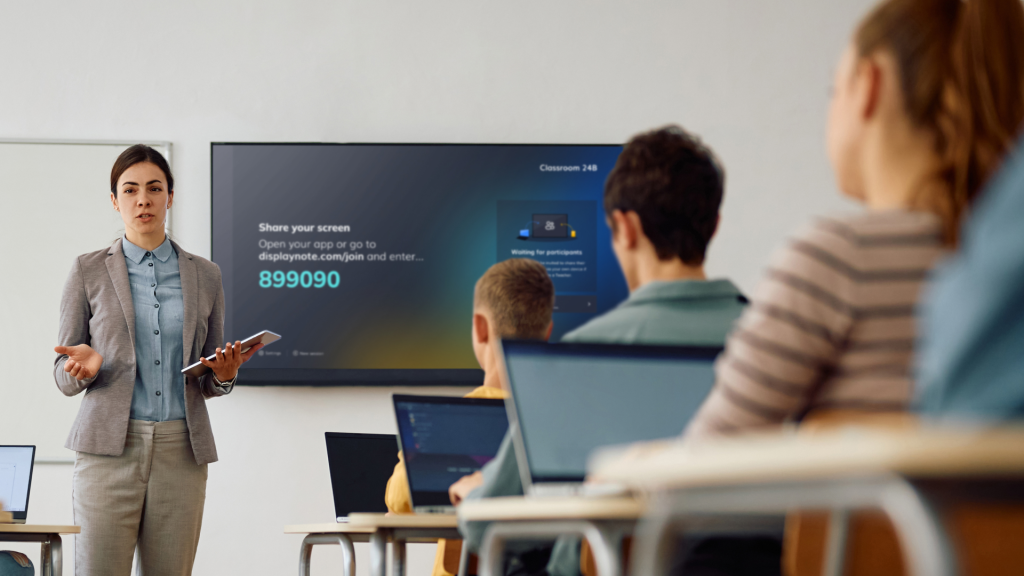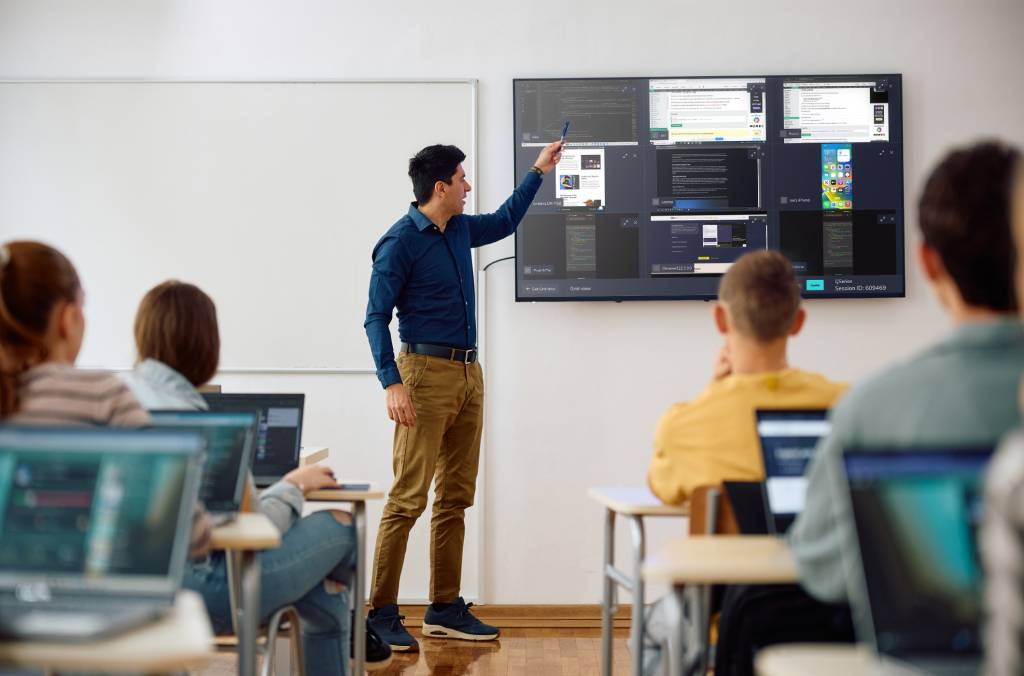
7 things to avoid so that you can run more effective meetings.
Meetings tend to dominate the working day and there are, on average, around 11 million business meetings each and every day. They come in a variety of sizes and are organised for many reasons: reviews, brainstorming, planning, idea generation, information transfer and even meetings about meetings.
Meetings are also costly affairs: just think what it costs to bring 6 people into a meeting for an hour and a half; think also of the opportunity cost of that 90 mins, that is – what else could those 6 people be doing during that period.
When we bring people together, it’s imperative that that time is as productive and effective as humanly possible.
With that in mind, we’ve compiled a list of 7 easy-to-implement changes that will start you on your way to maximum meeting room productivity.
1. Electing a Single Presenter
Not everyone is comfortable standing at the front and being the presenter at the centre. To let the best ideas bubble up, everyone needs to have the platform to contribute. Real-time collaborative note-taking ensures you capture everything that happens during your meeting.
There are a number of ways to achieve this: Use an online collaborative note-taking tool or using a wireless presentation system that lets multiple attendees send what’s on their screen to a main display.
Showing what’s on multiple devices up on the main screen acts as a great back-channel and allows for everyone to get involved no matter how comfortable they are with speaking.
2. Conversations Veering Off Course
A good meeting should have a well-defined outcome. One of the greatest obstacles to that is conversations veering off course. An online chat tool is one way of letting attendees discretely reach out to other attendees with a view to getting things back on track. Another is being able to present your content without having to wait your turn or seek permission.
3. Not turning Action Items into Tasks
Getting stuff done, not just documenting stuff that has to be done, means that you should be taking your action-required items and turning them into tasks. Whatever the tool you use, Todoist, Taskclone, Excel….it’s important that you: Write the task, assign a date and owner, add supporting notes, note any dependencies eg, book design time, get sign-off from engineering on efficacy, assign a category
4. Huddling Around a Screen
Everyone huddling around a laptop to view what’s on a PowerPoint isn’t exactly the gateway to the free flow of ideas. It’s more likely to waste time while everyone queues up to have a look. Instead, think about using collaborative visual tools such as Montage so people can share and reorganise ideas on the fly.
5. Not Planning for Interruptions
Interruptions can come from anywhere: a colleague that disagrees fundamentally with what’s being discussed, someone from another team bringing up irrelevant information, team-members using the meeting as a personal soap-box. The following steps will go some way to helping you handle what can be frustrating: Sending an agenda ahead of time and asking for input will make everyone feel like they have had a hand in shaping what’s up for discussion.
Remember: don’t get emotional. Most often it’s not a personal attack on you so try to stay calm and take the emotion out of the situation. Probe further. Don’t assume when someone interjects, it’s a bad thing – often nay-sayers can take you out of a bubble with some well directed scepticism. Ask interrupters to elaborate and quite often you can see things in a different light.
Using a wireless presentation system in the meeting room allows you to always display the meeting agenda on the main meeting room display alongside the contributions from attendees.
6. Not visually Backing Up What’s Being Said
During a meeting, it’s important that you periodically summarize the discussion – it helps keep track of where you’re at and avoids discussions going down a cul-de-sac of sorts. It’s also really important that any oral communications are reinforced with written/published documents.
It’s difficult to remember everything that’s been said and personal notes can be so subjective. Instead, give everyone the ability to reinforce what they say with content on that topic. Say, it’s your design team talking through the proposed look and feel of the new site?
Traditionally this was done with moodboards, printouts, sketches etc or one of the team flicking through a presentation on the big screen but in meetings now we’re seeing all team members simultaneously streaming everything from their devices to the main screen and that’s helping keep disruptions to a minimum, maintain the flow and also creates nice little bonuses like clutter-free working space.
7. Neglect the Hard Costs
According to Verizon, a five-person meeting conducted in-person (involving plane travel for four of the attendees) can be over seven times more expensive than a meeting conducted by audio conference, and nearly three times as expensive as a video conference: In-person meeting $5,197.50 Audioconference $689.24 Videoconference $1,700.69
Even if you avoid the in-person meeting, video and audio conference calls can still end up wasting valuable resources: time spent searching for and passing cables so that everyone can present. Wondering if those in other locations can actually see what’s being presented and contribute.
Think about what technology you can use that makes it easy for multiple meeting attendees, to simultaneously contribute to the meeting, both in terms of content sharing and communication alongside that.
Having those hard costs in mind as you meet helps you focus on what actually matters and keeps productivity and efficiency front and centre.
Next Steps
Want to make your meetings more proudctive?

You may also be interested in our blog post Increasing Productivity in Enterprises via Effective Collaboration.
Want to stay in the loop?
Keep up-to-date with everything DisplayNote – including new releases, job openings, and customer giveaways.
Don’t worry, we’ll not spam you and we’ll never share your email with anyone






